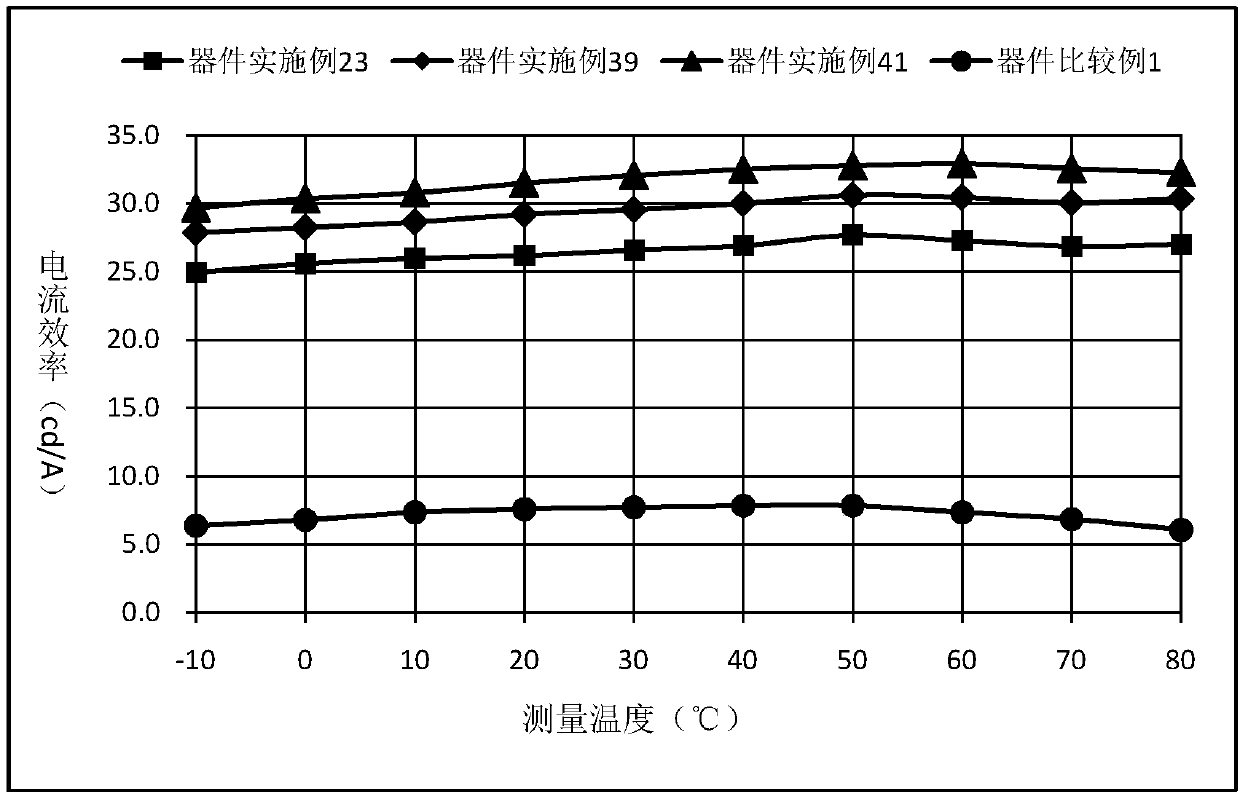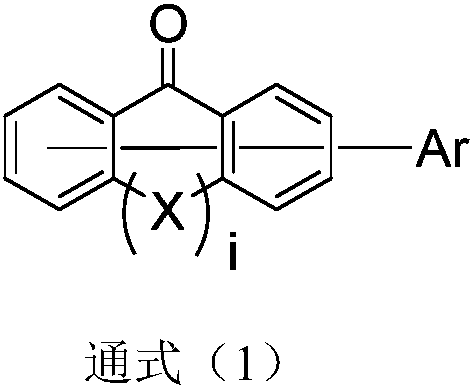Ketone structure-cored organic compound and application thereof to OLED (organic light emitting diode) devices
An organic compound and compound technology, applied to the application of organic light-emitting diodes, based on the compound field of ketone structure, can solve the problem of efficiency roll-off, difficult exciton utilization rate and high fluorescence radiation efficiency, low S1 state radiation transition rate, etc. problems, to achieve the effect of increasing orbital overlap, avoiding aggregation, and good industrialization prospects
- Summary
- Abstract
- Description
- Claims
- Application Information
AI Technical Summary
Problems solved by technology
Method used
Image
Examples
Embodiment 1
[0063] Synthesis of Example 1 Intermediate B
[0064]
[0065] Under nitrogen atmosphere, weigh raw material I and dissolve it in tetrahydrofuran, then add raw material III and tetrakis(triphenylphosphine) palladium, stir the mixture, add potassium carbonate aqueous solution again, and keep the mixed solution of the above reactants at a reaction temperature of 70- At 90°C, heat under reflux for 5-20 hours. After the reaction was completed, cooling and adding water, the mixture was extracted with dichloromethane, the extract was dried over anhydrous sodium sulfate, filtered and concentrated under reduced pressure, and the obtained residue was purified by silica gel column to obtain Intermediate B;
[0066] The molar ratio of raw material I to raw material III is 1:1.0 to 1.5, the molar ratio of tetrakis(triphenylphosphine) palladium to intermediate II is 0.001 to 0.02:1, and the molar ratio of potassium carbonate to raw material I is 1.0 to 2.0: 1. The ratio of tetrahydrofu...
Embodiment 2
[0074] The synthesis of embodiment 2 compound C01
[0075]
[0076] A 250ml four-necked bottle, in a nitrogen atmosphere, add 0.01mol 2-bromo-10,10-dimethyl-10H-anthrone, 0.015mol A1, 0.03mol sodium tert-butoxide, 1×10 -4 mol Pd 2 (dba) 3 , 1 × 10 -4 mol tri-tert-butylphosphine, 150 ml of toluene, heated to reflux for 24 hours, sampling point plate, the reaction was complete, naturally cooled, filtered, the filtrate was rotary evaporated, passed through a silica gel column to obtain the target product with a purity of 99.40% and a yield of 46.90%.
[0077] Elemental analysis structure (molecular formula C 40 H 28 N 2 O): Theoretical C, 86.93; H, 5.11; N, 5.07; O, 2.89; Tested: C, 86.95; H, 5.09; N, 5.09; O, 2.87. ESI-MS(m / z)(M + ): The theoretical value is 522.22, and the measured molecular weight is 522.24.
Embodiment 3
[0078] The synthesis of embodiment 3 compound C05
[0079]
[0080] A 250ml four-necked bottle, in a nitrogen atmosphere, add 0.01mol 2-bromo-10,10-dimethyl-10H-anthrone, 0.015mol A2, 0.03mol sodium tert-butoxide, 1×10 -4 mol Pd 2 (dba) 3 , 1 × 10 -4 mol tri-tert-butylphosphine, 150 ml of toluene, heated to reflux for 24 hours, sampled plate, the reaction was complete, naturally cooled, filtered, the filtrate was rotary evaporated, and passed through a silica gel column to obtain the target product with a purity of 97.62% and a yield of 50.82%.
[0081] Elemental analysis structure (molecular formula C 34 H 23 NO 2 ): Theoretical C, 85.51; H, 5.11; N, 5.07; O, 2.89; Tested: C, 85.51; H, 4.85; N, 2.93; O, 6.70. ESI-MS(m / z)(M + ): The theoretical value is 477.17, and the measured molecular weight is 477.19.
PUM
| Property | Measurement | Unit |
|---|---|---|
| thickness | aaaaa | aaaaa |
| thickness | aaaaa | aaaaa |
Abstract
Description
Claims
Application Information
 Login to View More
Login to View More - R&D
- Intellectual Property
- Life Sciences
- Materials
- Tech Scout
- Unparalleled Data Quality
- Higher Quality Content
- 60% Fewer Hallucinations
Browse by: Latest US Patents, China's latest patents, Technical Efficacy Thesaurus, Application Domain, Technology Topic, Popular Technical Reports.
© 2025 PatSnap. All rights reserved.Legal|Privacy policy|Modern Slavery Act Transparency Statement|Sitemap|About US| Contact US: help@patsnap.com



